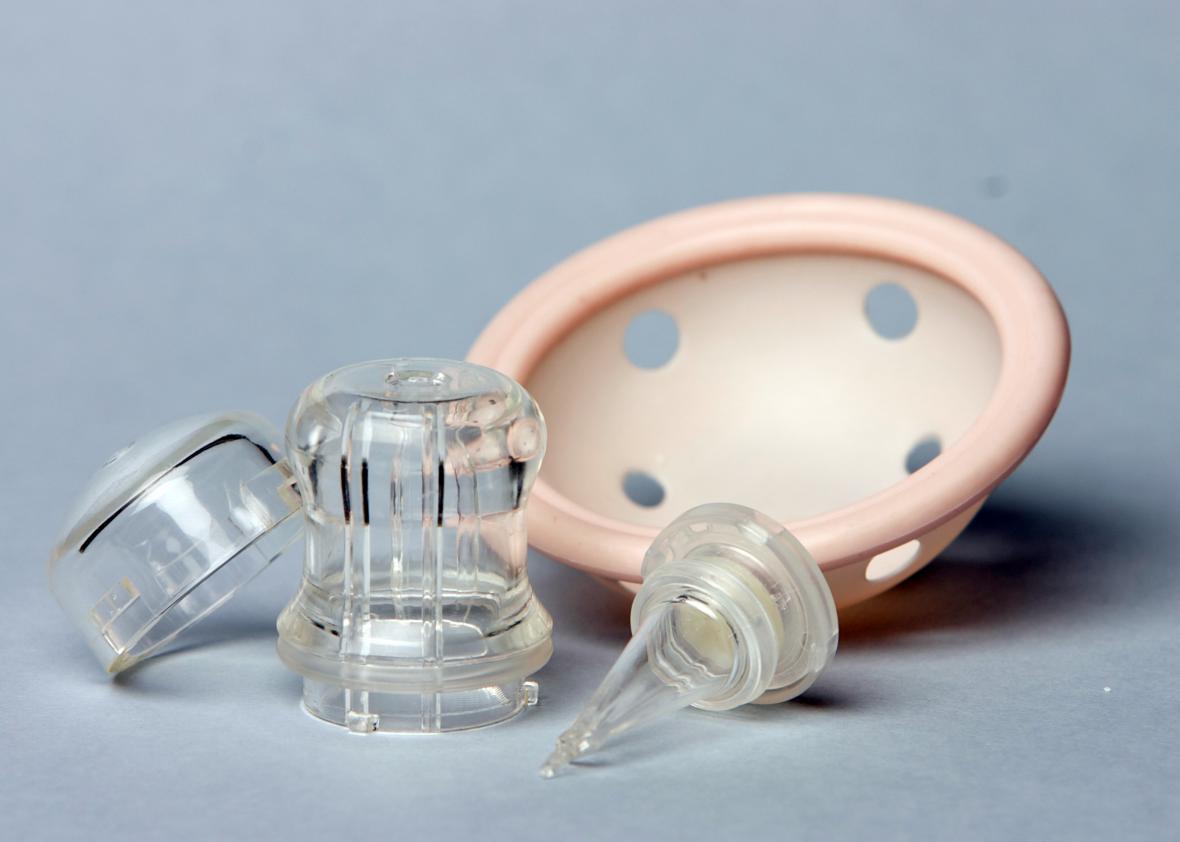A new fertility device is putting a DIY spin on in vitro fertilization, letting clinics offer the wildly expensive procedure at about half the traditional cost. Effortless IVF, a budget-friendly clinic in Calgary, Canada that opened earlier this month, still employs doctors, harvests eggs from people trying to get pregnant, and transfers embryos into their uteruses. But instead of letting the sperm and eggs do their thing in a petri dish nestled inside an incubator, Effortless IVF puts them in the idyllic environment of a human vagina.
The idea seems almost too obvious to work. It’s like someone woke up one day and realized that human bodies are warm, like incubators—that instead of simulating the temperature, oxygen balance, and pH levels of the inside of a human body, doctors could just place the developing embryo inside an actual human body. The process of Intravaginal Culture (IVC) begins like an IVF cycle: A person takes drugs to get her ovaries to ripen extra eggs, doctors remove those eggs, and they’re combined with sperm in a sterile container. Then, where an IVF practitioner would wait for the embryos to develop for three or five days* before putting one or more in a uterus, an IVC practitioner gives eggs and sperm just five minutes to mingle outside the patient’s body before they’re put in a plastic box that goes into the patient’s vagina.
This FDA-approved capsule, an INVOcell, is the star of the IVC procedure—and again, it seems too simple to possibly be real. It measures 4 centimeters long by 3 centimeters in diameter and is made of polystyrene, like a petri dish. A diaphragm keeps the INVOcell in a woman’s vagina for five days, while her body modulates the temperature and gas makeup of the fertilization environment. Then, the capsule comes out, and the best embryo or two get placed in the patient’s uterus.
The first 100 Effortless IVF patients prepaid $4,000 in a crowdfunding campaign in May 2016 to help get the clinic off the ground; subsequent patients will pay about $6,500 for each cycle. Traditional IVF usually costs more than $10,000—and up to around $17,000—in Canada. Because Effortless IVF doesn’t have to buy or operate expensive incubators, overhead is a lot lower. The clinic has also found other ways to cut costs: It will schedule all patients on weekdays (Mondays for ultrasounds on the 10th day of a woman’s ovulation cycle, Wednesdays through Fridays for egg retrieval, and Mondays through Wednesdays for embryo transfer) and won’t open on the weekends. Patients will take lower-than-usual doses of the drugs that stimulate egg production and will get just one ultrasound instead of going in for multiple tests before egg retrieval.
Last spring, just before the crowdfunding campaign, Effortless IVF co-founder Jason Broome and two fertility doctors published the results of a 40-person randomized study that compared fertilization, pregnancy, and live birth rates of women who underwent IVF treatments and ones who tried IVC. Up to 10 eggs were harvested from each patient for either an incubator or the INVOcell. IVF patients got a greater proportion of “quality embryos” from the eggs harvested (51 percent versus IVC’s 31 percent) but the quality of the blastocysts that got transferred into patients’ uteruses were the same, and the birth rates of the two groups did not significantly differ—12 IVF patients ended up with live births, compared to 11 IVC patients.
Motherboard reports that Broome plans to expand his fertility practice to clinics in other Canadian cities, and clinics around the country have brought INVOcell fertilization to the U.S. Parenthood is already expensive, and if the Affordable Care Act and its protections for maternity care get the boot, as Republicans in Congress have planned, bills will only get steeper. Saving a few thousand dollars by self-incubating an embryo seems like a promising way for prospective parents to cut medical costs.
*Correction, Feb. 23, 2017: This post originally stated that IVF practitioners transfer embryos after five days of development. In fact, they transfer embryos after either three or five days.
